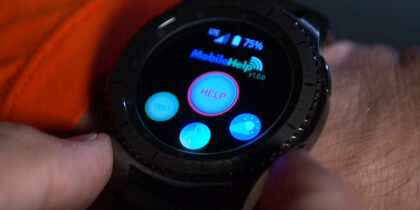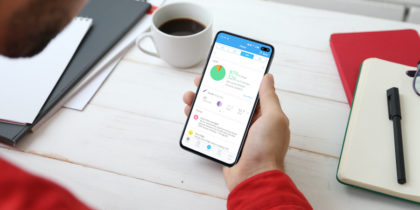There’s no doubt that businesses benefit from encouraging workplace wellness. A 2017 survey by Society for Human Resource Management found that 77 percent of organizations with a wellness program reported that they were somewhat or very effective in reducing healthcare costs, a top-of-mind concern for many companies.
These initiatives encourage employees to eat better, move more and get more sleep. HR teams are well aware that creating enthusiasm for workplace wellness initiatives is challenging. While in the past, programs would rely on an honesty policy or paper-based reporting, wearable technology is making it even easier for employees to get involved and for HR to track engagement and comply with insurance companies.
Improving Workplace Wellness Program Participation
Since their introduction to the marketplace, consumers have been intrigued by wearable fitness devices. The Consumer Technology Association notes that 67 million Americans have plans to buy a fitness wearable.
Wearables can monitor heart rate, activity level, steps taken and sleep patterns. Some devices help you track how much water you drink, how much caffeine you consume and, when synced with other apps, track the calories you are eating. There are wearable device apps that offer personalized coaching, which can include suggesting fitness goals and lifestyle changes.
User excitement derived from wearables and their data tracking abilities can increase participation in workplace wellness programs.
Motivating Positive Health Habits
For individuals, wearables serve as a tech-enabled cheering section, with constant reminders designed to maintain interest in corporate wellness programs.
Users can set their devices to send reminders and prompts to perform certain activities. This may be an alert that the wearer has been sitting for too long, and need to move around, a motivational message to get in 10,000 steps per day or a reminder to take the stairs instead of the elevator.
Ensure the Security of Healthcare Apps
Download the white paper for a free guide to mobile security in healthcare. Download Now
With the ability to set these individual goals and reminders, employees can customize the corporate wellness program to best suit their abilities, which helps keep them more invested. Additionally, seeing progress visually gives users an exact idea of how their health is improving over time.
From an HR viewpoint, the technology enables a self-reporting feedback loop, reducing the need to individually follow up with employees and gauge their progress. It also makes it easier to provide accurate data to health insurance companies, reducing upfront corporate costs for health insurance.
Creating a Healthy Social Environment
When implementing corporate wellness programs, it’s important to set the right atmosphere. The social aspect of these devices can help HR departments do that. Whether with co-workers or friends, apps such as S Health provide a leaderboard to spark competition among participants. When connected to a smartphone or tablet, users can also access their messages, calls or emails, and reach out to others for support or motivation.
Employers are also using gamification as a part of their initiatives. This means using the game-playing features that come with the devices or that are available through additional apps. These features encourage friendly competition, scoring points and earning rewards. Incentives can be as simple as earning badges or icons within health apps, or financial rewards such as gift cards or discounts on health insurance premiums or deductibles.
Adding wearables to a corporate wellness program can provide that extra incentive, increase individual engagement and help implementation for HR departments.
Learn what ways wearables can help create a more engaging fitness experience.








